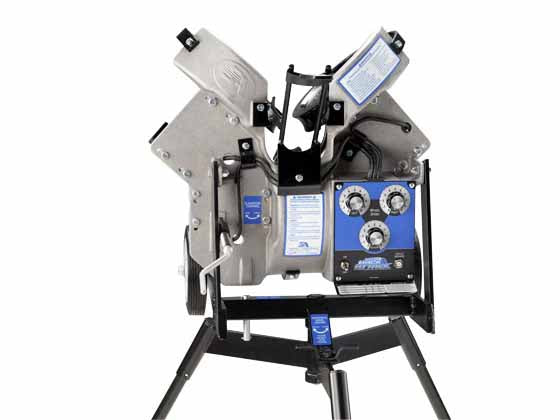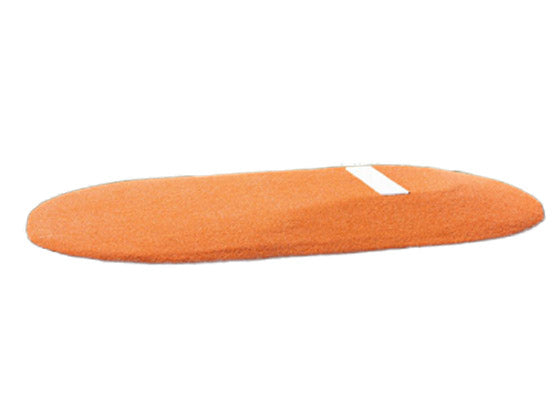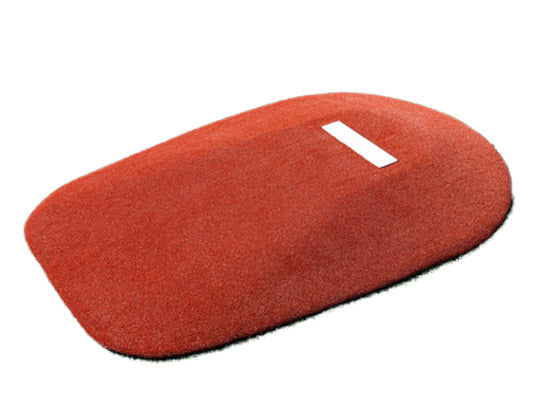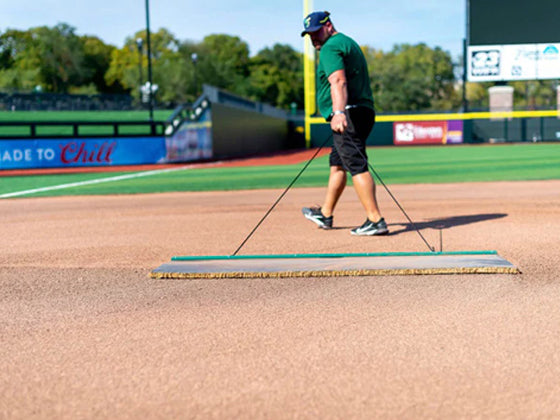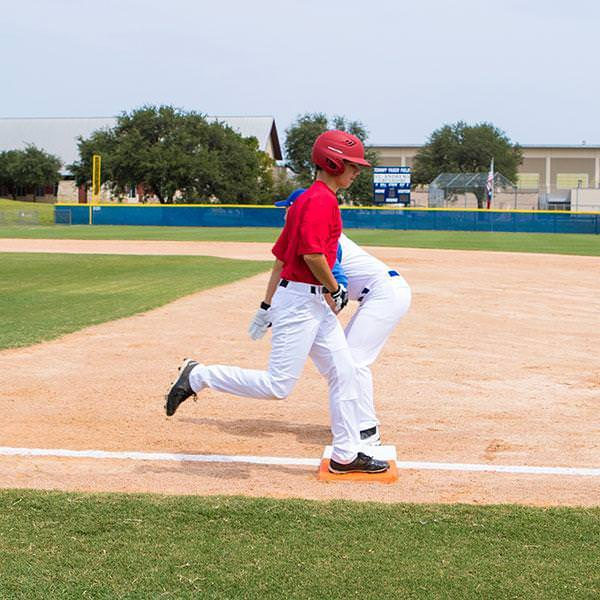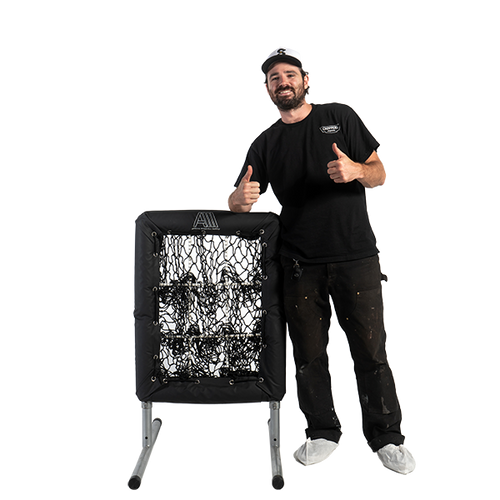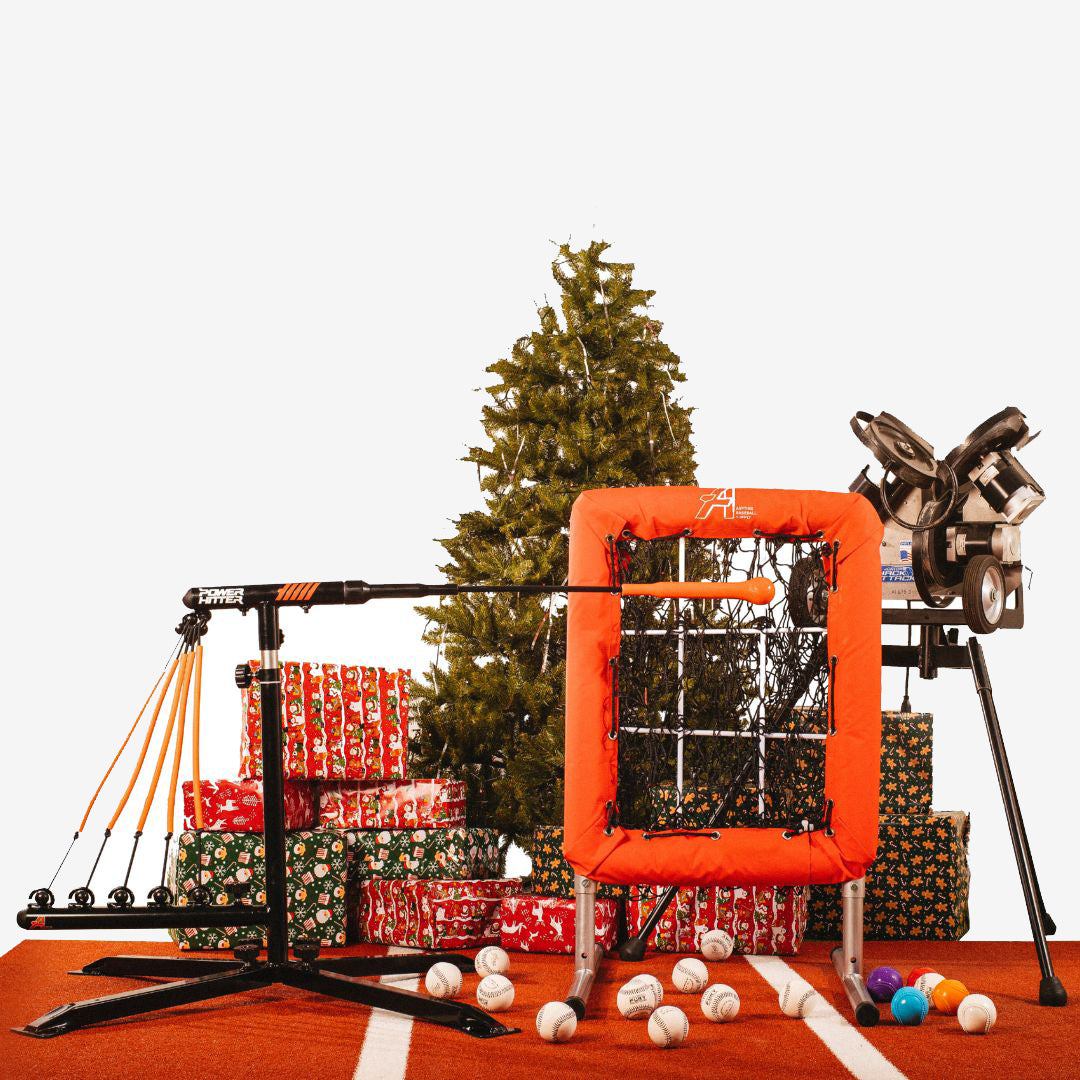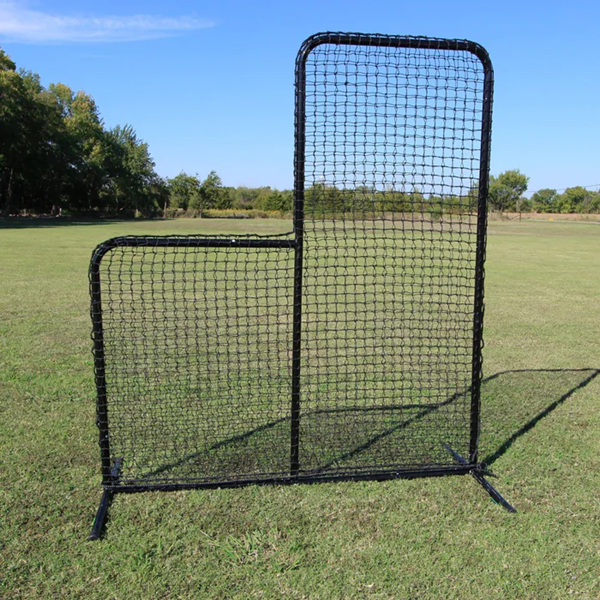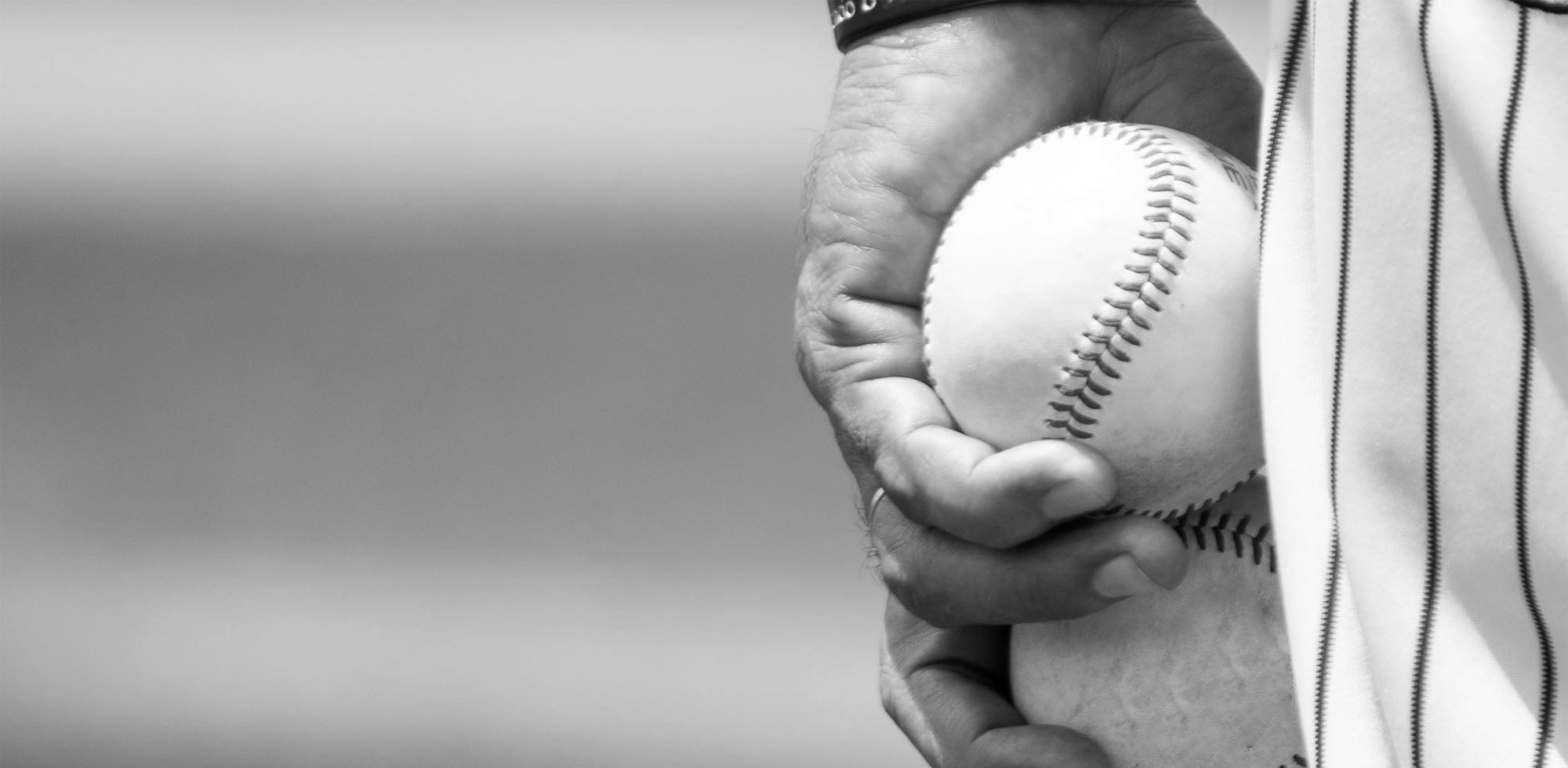Ever wondered why some baseball bases pop right off when a runner slides in, while others stay locked down tight?
Look, I've been around enough baseball fields to tell you this—the base you choose can literally make or break a player's season. I once watched a 12-year-old slide into what looked like a standard first base, only to have his cleat catch on a poorly designed anchor system. Twisted ankle, six weeks out. That's when I learned that not all baseball and softball bases are created equal.
Whether you're setting up little league fields, managing youth leagues, or running a serious high school program, the game of baseball is played on four bases that need to handle everything from gentle jogging to full-speed slides. And trust me, choosing the wrong base set can turn your field of play into a liability nightmare, especially when aiming for a home run.
I'm going to walk you through 7 game-changing insights about different types of bases that'll keep your players safe, your league compliant, and your budget happy. From breakaway bases designed for maximum player safety to heavy-duty anchored systems built for major league-level play, we're covering every base type you need to know.
Strategy #1: Understanding Base Classifications (It's Not Just About Color)

First things first—let's break down what separates one baseball base from another.
Three seasons ago, I inherited a youth program that had been using the same rubber bases for over a decade. These things were so worn down they looked like pancakes, and honestly about as safe as sliding into concrete. That's when I discovered the real difference between base types isn't just aesthetics—it's engineering.
Standard Anchored Bases: Your traditional baseball base that bolts or stakes directly into the ground. Rock solid, great for permanent installations, but zero give when runners make contact with the bases in baseball. Perfect for grass fields with consistent playing conditions.
Breakaway Baseball Bases: These are the game-changers for player safety. Designed to release under pressure, they reduce the risk of injury by up to 98% according to Little League Baseball studies. The bases are 90 feet apart just like regulation, but they'll pop off before your runner's leg does.
Throw-Down Bases: Portable, weighted bases perfect for practice or temporary setups. No installation required—just place and play. I keep a throw-down base set in every equipment bag because you never know when you need to set up an impromptu infield.
Double First Base: Half white, half orange—this safety innovation gives runners a clear target while keeping the fielder in fair territory. Required in many youth leagues and becoming standard even in high-quality baseball programs.
Here's the key spec that matters: release mechanism. Quality breakaway bases release at 165-200 pounds of lateral force. Anything higher and you're not getting the safety benefit.
Strategy #2: Safety Bases Are Non-Negotiable (Especially for Youth)
This one hits close to home because I've seen what happens when leagues cut corners on safety.
Two years back, our little league fields switched from standard bases to breakaway bases mid-season after a nasty ankle injury. The difference was immediate—runners played more aggressively because they weren't afraid of getting hurt, and parents actually relaxed during games instead of holding their breath every time someone rounded first base.
Why Safety Bases Matter:
- 98% reduction in sliding injuries (Little League data)
- Faster game pace (runners don't hesitate)
- Lower insurance costs for leagues
- Required by many youth organizations
The release base technology isn't complicated, but it's brilliant. When a runner slides and applies lateral force, the base separates from its anchor, absorbing the impact instead of transferring it to the player's joints.
I always recommend safety bases for any league under 16 years old. Yes, they cost more upfront—about $40-60 per base versus $15-25 for standard rubber bases—but try explaining to parents why you went cheap on their kid's safety.
Pro insight: Some coaches worry that breakaway bases will "teach bad sliding technique." That's backwards thinking. Players slide harder and more naturally when they're not scared of injury, which actually improves their fundamentals.
Strategy #3: Home Plate Deserves Special Attention

Here's something most people overlook—home plate isn't just another base in the base set.
Last month, I watched a close play at home where the runner was clearly safe, but the umpire called him out because he couldn't see the plate through a cloud of dust. The home plate on that field was so worn down it was practically invisible. That's a $200 piece of equipment affecting game outcomes.
Beyond the bases themselves, maintaining optimal field conditions is crucial for player performance and safety. For comprehensive guidance on keeping your infield in tournament-ready condition, check out our detailed guide on how to nail drag a baseball field and why it makes such a difference in game quality.
Home Plate Specifications That Matter:
- 17-inch width (regulation requirement)
- Proper beveled edges for safety
- White rubber construction for visibility
- Anchoring system that keeps it flush with ground level
Unlike first base, second base, and third base, home plate needs to handle different types of contact. Runners sliding, catchers setting up, batters stepping in—it takes more abuse than people realize, especially on league bases.
The best baseball home plates use heavy-duty rubber with reinforced anchoring. Some leagues try to save money with lightweight options, but they shift during play and create uneven surfaces that affect calls and player safety.
Quick tip: Replace home plate every two seasons minimum. It's the most visible base on the field, and a worn-out plate makes your entire operation look amateur.
Strategy #4: First Base Gets Special Treatment (And Should)

Every serious player knows this—first base sees the most action in any baseball game.
I've been tracking this for three seasons now, and first base takes 3x more impact than second or third base combined. Every ground ball, every bunt, every close play—it all happens at first and third bases. That's why smart leagues invest in specialized first base solutions.
Double First Base Systems: This is where the orange and white bases for little league come into play. Runner aims for orange (foul territory), fielder covers white (fair territory). Eliminates collisions and gives everyone a clear target on the baseball infield.
Breakaway First Bases: Enhanced release mechanisms specifically calibrated for the angles and speeds common at first base. They're engineered differently than standard safety bases because the force dynamics are unique.
Reinforced Anchoring: Since first base can't release during normal fielding plays, the anchored versions need extra durability. Look for multiple anchor points and vibration-resistant mounting.
The rule in most youth leagues: if you can only afford breakaway bases for one position, make it first base. That's where 70% of base-running injuries occur.
I've seen leagues that use standard bases everywhere except first, where they invest in a quality double first base system. Smart compromise that maximizes safety where it matters most.
Strategy #5: Throw-Down Bases Have Their Place (More Than You Think)
Don't sleep on throw-down bases—they're not just for practice anymore.
Three months ago, we had to set up emergency fields after storm damage took out our main complex. Those throw-down base sets saved our tournament because we could create regulation infields anywhere we had space. Takes about 5 minutes to set up a complete diamond versus hours for permanent installation. Of course, having portable bases is just the beginning of an effective practice setup. Protecting your coaches and pitchers during batting practice is equally critical, which is why investing in quality protective equipment should be part of every portable training kit. Looking into our baseball l screens buying guide for more details.
Where Throw-Down Bases Excel: they are perfect for youth leagues and baseball training.
- Tournament overflow fields
- Indoor winter training
- Clinics and camps for baseball training are essential for developing skills in players of all ages.
- Emergency field setups
- Practice sessions on non-baseball surfaces
The key specs for quality throw-down bases: minimum 15-pound weight (to prevent shifting), regulation size and shape, and durable base material that won't crack in cold weather.
I keep weighted throw-down bases in every equipment bag because you never know when opportunity strikes. Found a perfect practice field but no bases? Problem solved with the best bases for little league that prioritize player safety. Need to run infield drills on a football field? Easy setup. When you've got your practice field set up with throw-down bases and safety equipment in place, maximizing that training time becomes the next priority. Pair your portable base setup with the right equipment by exploring our curated selection of the best baseball training aids to develop fundamental skills efficiently.
The professional models use sand-filled weighted bottoms with drain plugs for seasonal storage. More expensive than basic rubber, but they'll last for years and won't slide around during aggressive base running.
Speaking of effective practice sessions, integrating specialized training equipment can accelerate player development significantly. Our guide to the best weighted baseballs shows you how to build arm strength and improve throwing mechanics during those portable field practice sessions.
Strategy #6: League Compliance Isn't Optional (Know Your Rules)

Here's where many programs get tripped up—different leagues have different base requirements.
Last season, I had a coach show up to our little league fields with major league-style bolted bases for his travel team practice. Took one look at our breakaway system and started complaining about "regulation standards." I had to explain that Little League Baseball actually requires safety bases for official play—his "regulation" bases would've gotten us shut down by the district.
League-Specific Requirements:
- Little League: Breakaway bases mandatory for all divisions
- Babe Ruth/Cal Ripken: Safety bases recommended, double first base required
- High School: Varies by state, but safety bases increasingly required
- Travel/Tournament: Check specific organization rules
The bases for every level aren't interchangeable. What works in major league baseball (permanently anchored bases) can be illegal in youth leagues where player safety takes priority over traditional "regulation" feel, especially for baseball infields.
Smart league administrators keep documentation of base compliance with purchase records. When district inspectors show up (and they do), you need proof that your bases for baseball meet current safety standards.
Pro tip: Buy bases that exceed your current league requirements for better safety and performance. Teams move up levels, and safety standards keep evolving upward. Better to have bases that work everywhere than get caught short during a playoff run.
Strategy #7: Quality Pays Off (In Ways You Don't Expect)
This is where the rubber meets the road—literally.
Two years ago, I compared three different base sets over a full season. Budget bases ($15 each), mid-range models ($35 each), and premium safety bases ($65 each). The budget bases needed replacement after 60 games. The mid-range lasted the season but looked rough. The premium bases? Still going strong after two full seasons and look almost new.
What Quality Gets You:
- UV-resistant materials that won't fade or crack
- Superior anchor systems that don't loosen
- Better release mechanisms (for safety bases)
- A professional appearance that parents and players notice is crucial when choosing league bases for little league.
- Lower total cost of ownership
Here's the math that matters: those $65 premium bases work out to about $1.50 per game over a typical lifespan. The "cheap" $15 bases? More like $3.00 per game when you factor in replacement costs and the hassle of constant maintenance.
The best baseball bases use high-density foam cores with reinforced rubber exteriors. They maintain their shape and safety characteristics even after hundreds of slides and thousands of steps.
Quality also affects game flow. Cheap bases shift position, creating uneven surfaces that affect fielding and running. Players notice, parents notice, and it reflects on your entire program's professionalism.
Time to Upgrade Your Diamond
Here's what we've covered: safety bases aren't optional for youth play, home plate deserves special attention, first base takes the most punishment, throw-down bases solve more problems than you think, league compliance varies widely, and quality pays off in the long run.
Whether you're managing little league fields, setting up youth leagues, or running serious competitive programs, the right baseball and softball bases make all the difference. They're not just markers on the field—they're the foundation of safe, enjoyable baseball.
Ready to find the perfect base set for your field?
Browse our complete selection of baseball and softball bases, from Little League-approved breakaway systems to professional-grade anchored bases built for high-level play. Every base set comes with installation guides and our satisfaction guarantee because we know what works on the field.
Questions about which bases fit your league requirements? Check out our base comparison videos on YouTube or DM us on Instagram @[YourHandle] for the best softball bases for sale. We're here to help you make the right choice for your players and your budget.
Just sharing insights from years on the diamond—always prioritize player safety in your base selection!

 Contact Us
Contact Us